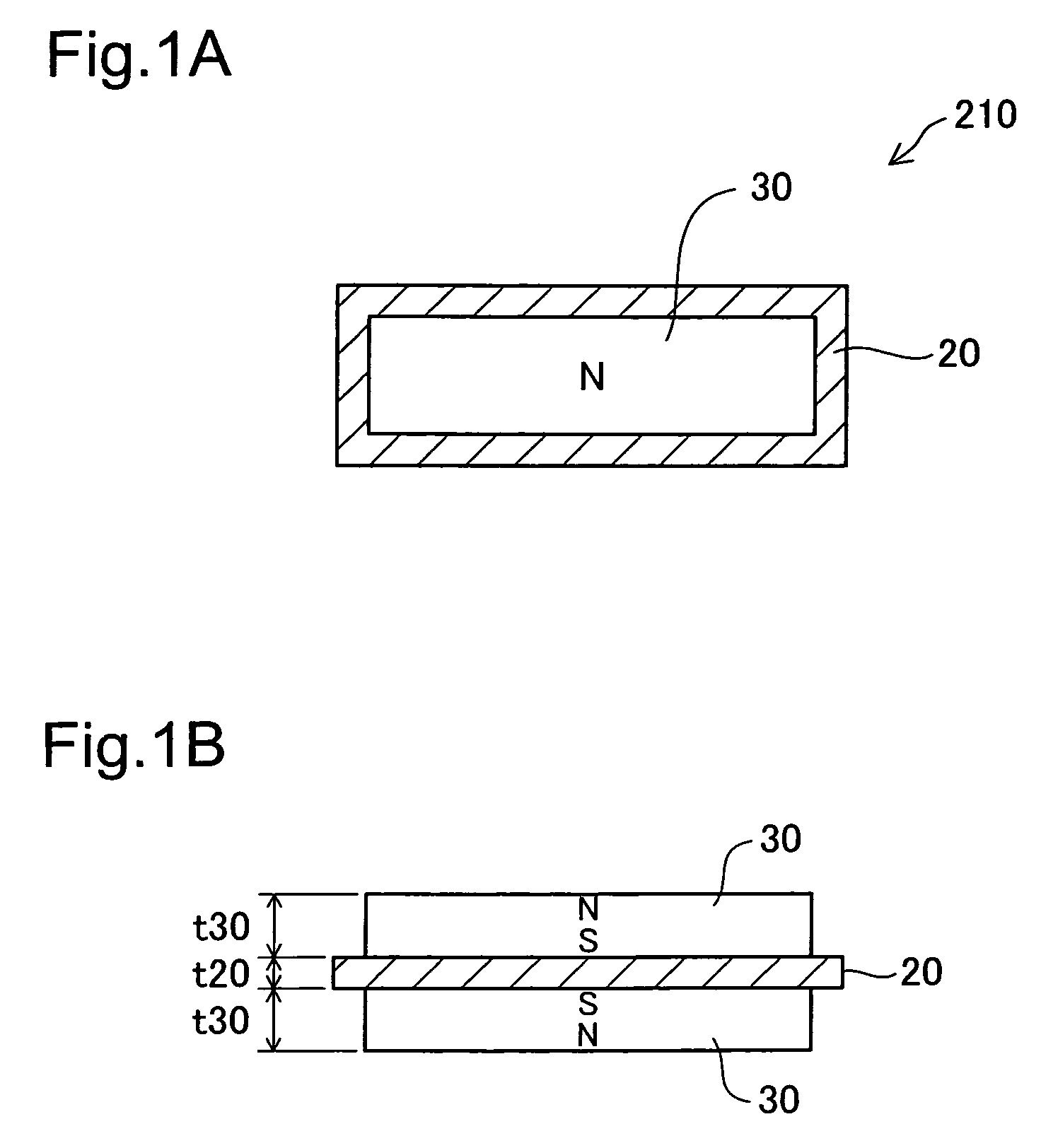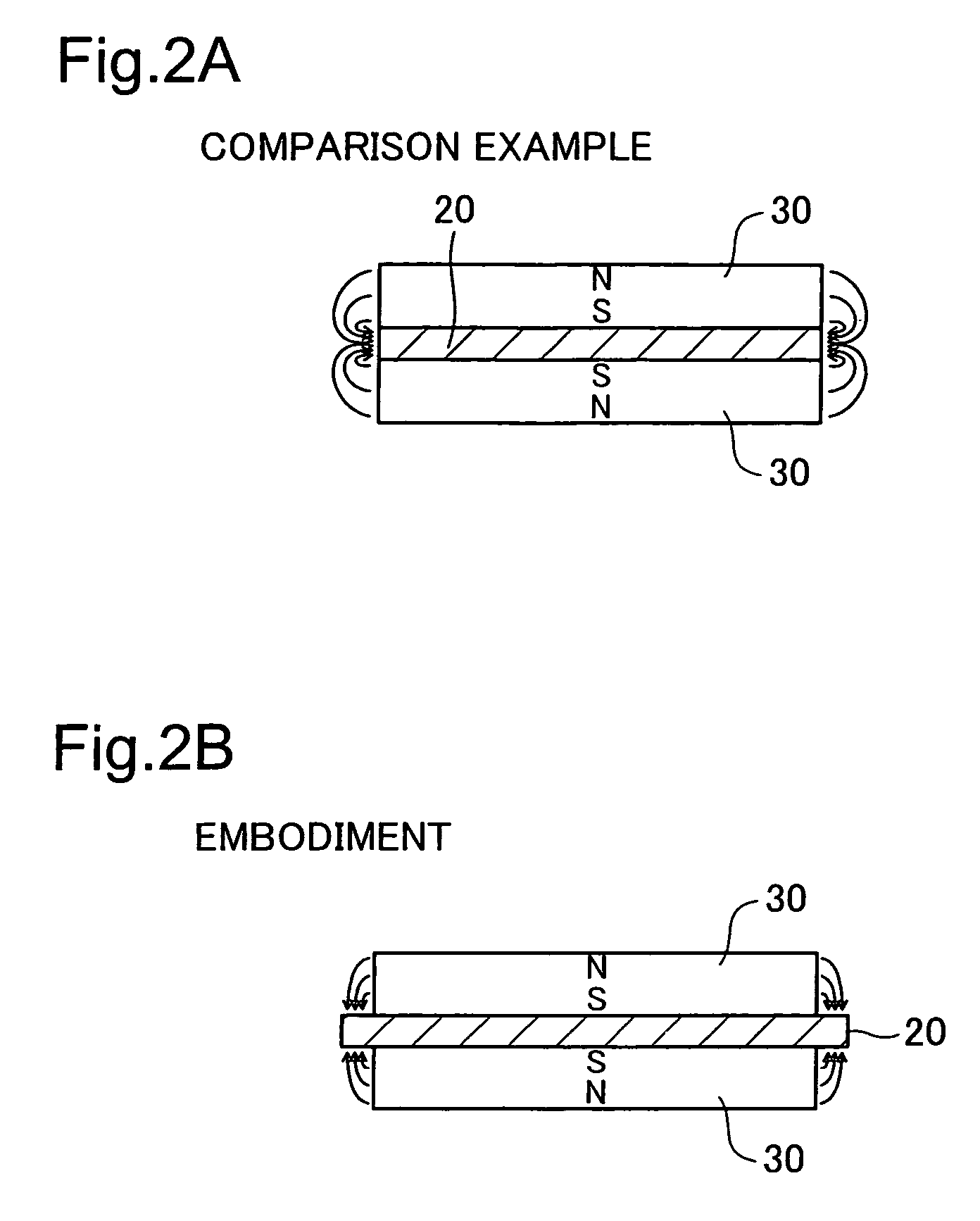Electromagnetic actuator using permanent magnets
a technology of permanent magnets and actuators, applied in the direction of magnets, magnets, propulsion systems, etc., can solve the problems of no room for design modification to alleviate structural limitations, and the placement of the magnetic poles of the magnets has various limitations, so as to achieve the effect of increasing efficiency and excessive positional changes
- Summary
- Abstract
- Description
- Claims
- Application Information
AI Technical Summary
Benefits of technology
Problems solved by technology
Method used
Image
Examples
first embodiment
B-1. First Embodiment of Control Device
[0092]FIG. 16 shows a change in current during position control in connection with a first embodiment of an actuator mechanism control device. In the first embodiment, where the actuator mechanism 100 (FIGS. 4A-4C) is to be moved in the leftward direction, a constant positive current value Ip is impressed to the electromagnetic coil unit 110. Where the actuator mechanism 100 is to be moved in the rightward direction, on the other hand, a constant negative current In is impressed to the electromagnetic coil unit 110. In this way, according to the control device of the first embodiment, the controlled variable (the position of the actuator mechanism) and the manipulated variable (the current value impressed to the electromagnetic coil unit 110) are set to have a nonlinear relationship. Therefore, as described below, position control is executed using a principle different from PID control. The reason that the position and the current value are se...
second embodiment
B-2. Second Embodiment of Control Device
[0104]FIG. 22 is a block diagram showing the internal construction of a current value determination unit 450a of a second embodiment. FIG. 23 is a timing chart showing the operation of the control device of the second embodiment. The construction of the second embodiment differs from that of the first embodiment solely in regard to the construction of the current determination unit, and is otherwise identical thereto.
[0105]This current value determination unit 450a has a deviation limit value storage unit 600, a three-value determination unit 602, a current value table 604, a counter 606, a coefficient generator 608, a multiplier 610 and an integrator (accumulator) 612. The three-value determination unit 602, like the three-value determination unit 452 shown in FIG. 19, outputs three deviation sign signals UP, EQU and DOWN, and supplies the deviation A4 to the current value table 604. The three-value determination unit 602 also has the functio...
third embodiment
B-3. Third Embodiment of Control Device
[0111]FIG. 25 is a block diagram showing the construction of a control device of a third embodiment. FIG. 26 is a timing chart pertaining to the operation of the control device of the third embodiment. This control device 400a differs from the control device of the first embodiment (FIG. 17) in that it has the current value determination unit 450a of the second embodiment (FIG. 22) in place of the current value determination unit 450 (FIG. 17), and includes a polarity reduction unit 620 between the current value determination unit 450a and the drive signal generator 460. In other words, the control device of the third embodiment comprises the control device of the second embodiment to which a polarity reduction unit 620 is added.
[0112]FIG. 27 is a block diagram showing the internal construction of the polarity reduction unit 620. The polarity reduction unit 620 has an up / down continuous determination unit 622, a counter 624 and a reduction coef...
PUM
 Login to View More
Login to View More Abstract
Description
Claims
Application Information
 Login to View More
Login to View More - R&D
- Intellectual Property
- Life Sciences
- Materials
- Tech Scout
- Unparalleled Data Quality
- Higher Quality Content
- 60% Fewer Hallucinations
Browse by: Latest US Patents, China's latest patents, Technical Efficacy Thesaurus, Application Domain, Technology Topic, Popular Technical Reports.
© 2025 PatSnap. All rights reserved.Legal|Privacy policy|Modern Slavery Act Transparency Statement|Sitemap|About US| Contact US: help@patsnap.com



